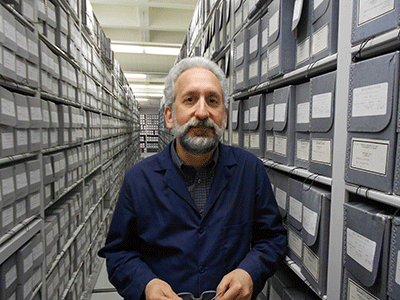 David Langbart is an Archivist in the Textual Archives Services Division of the National Archives and Records Administration (NARA). He has worked for NARA for over 36 years. Prior to his present job, he worked in the Judicial and Fiscal Branch, the Diplomatic Branch, and the Military Field Branch. He spent the bulk of his career undertaking archival appraisal of records, primarily of the agencies dealing with foreign affairs and the national-level intelligence agencies.
David Langbart is an Archivist in the Textual Archives Services Division of the National Archives and Records Administration (NARA). He has worked for NARA for over 36 years. Prior to his present job, he worked in the Judicial and Fiscal Branch, the Diplomatic Branch, and the Military Field Branch. He spent the bulk of his career undertaking archival appraisal of records, primarily of the agencies dealing with foreign affairs and the national-level intelligence agencies.
Camila McHugh, on behalf of the Brown-UEM research team, had the chance to tour the National Archives at College Park with David Langbart and speak with him about his work and the project collaboration between Brown, UEM and NARA.
What does this project mean for the National Archives?
We’re hoping that it’s the first of many partnerships like this that will help us digitize records and make them more widely available to the public. In that respect, the comprehensive nature of the methodology of this project is a good model. It’s a good project to say, “Follow this model and you can’t go wrong.” Nobody has ever come in and done a project in such a comprehensive manner. Researchers tend to pick and choose documents, but this project digitizes everything. It’s not predigested. Instead they’re saying, “Here are the files, go look and draw your own conclusions.” You guys are the first.
You have taken a personal interest in this project. What makes this project interesting for you?
Foreign affairs records are my primary interest. Anytime there’s anybody who is really interested in those records, I’m really interested in helping them. It’s a really neat project and I like the idea that US government records can assist other countries. I don’t know if they’ll be able to resolve longstanding issues, but to help them understand those issues is important.
What is the most exciting part of your job?
I’ve worked with the archives for a very long time and I still find something new and interesting in the records every day. It’s just neat to work with the records and see what’s there and see what little tidbits come up. I also like working with people from other agencies and with the researchers.



